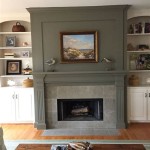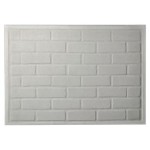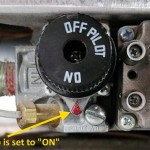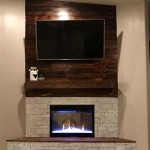Fireplace Door Replacement Glass: A Comprehensive Guide
Fireplace doors serve as a crucial safety barrier, preventing sparks and embers from escaping the firebox and potentially causing damage or injury. The glass within these doors is specifically designed to withstand high temperatures and provide a clear view of the fire. However, over time, fireplace door glass can become damaged, cracked, or clouded, necessitating replacement. This article provides a comprehensive guide to understanding the types of fireplace door glass, the reasons for replacement, the process of replacing the glass, and important safety considerations.
Fireplace doors significantly improve the efficiency of a fireplace. By regulating airflow, they can help to reduce drafts and maintain a more consistent room temperature. Properly functioning fireplace doors also prevent heat loss up the chimney when the fireplace is not in use. In addition to their functional benefits, fireplace doors can enhance the aesthetic appeal of a fireplace, complementing the overall decor of a room.
When fireplace door glass becomes compromised, it's crucial to address the issue promptly. Ignoring damaged glass can lead to safety hazards and diminished efficiency. Choosing the correct replacement glass and following proper installation procedures are essential for ensuring the safety and optimal performance of the fireplace.
Understanding Fireplace Door Glass Types
Several types of glass are commonly used in fireplace doors, each with varying properties and levels of heat resistance. Selecting the appropriate type of glass is critical for safety and longevity. The most common types include tempered glass, ceramic glass, and wire mesh glass.
Tempered Glass: This type of glass is heat-treated to increase its strength and resistance to thermal shock. It is commonly used in fireplace doors that are not directly exposed to extremely high temperatures. Tempered glass is typically less expensive than ceramic glass, making it a popular choice for many fireplace doors. However, it is important to note that tempered glass can shatter into small, relatively harmless pieces if it breaks, but it's not as heat-resistant as ceramic glass.
Ceramic Glass: Also known as pyroceramic glass, this type of glass is specifically designed to withstand extremely high temperatures, often exceeding 1000 degrees Fahrenheit. Ceramic glass is the preferred choice for fireplace doors that are directly exposed to the flames and intense heat of a fire. It offers superior heat resistance and durability compared to tempered glass. While more expensive than tempered glass, its extended lifespan and enhanced safety features make it a worthwhile investment for many homeowners. Ceramic glass expansion is minimal with high temperatures, another important safety feature.
Wire Mesh Glass: This type of glass incorporates a wire mesh embedded within the glass structure. The wire mesh provides added strength and helps to prevent the glass from shattering into large pieces if it breaks. Wire mesh glass is often used in applications where safety is a primary concern. It often offers a less obstructed view of the fire compared to clear glass options. It is less common than tempered or ceramic glass due to its appearance.
Identifying the type of glass currently in your fireplace door is crucial before ordering a replacement. Consult the manufacturer's specifications or consult with a qualified fireplace technician if you are unsure.
Reasons for Fireplace Door Glass Replacement
Several factors can contribute to the need for fireplace door glass replacement. Recognizing the signs of damage or deterioration is essential for maintaining the safety and efficiency of your fireplace. Common reasons include:
Cracks: Cracks in the glass, regardless of size, compromise its structural integrity and ability to withstand heat. Even small hairline cracks can expand over time due to repeated exposure to high temperatures, eventually leading to a complete failure of the glass. Prompt replacement of cracked glass is vital to prevent potential safety hazards.
Chips and Scratches: While small chips and scratches may seem insignificant, they can weaken the glass and make it more susceptible to cracking under stress. Over time, these imperfections can worsen and compromise the glass's overall integrity. Deep scratches, in particular, can act as stress concentrators, increasing the likelihood of cracking.
Clouding or Discoloration: Over time, fireplace door glass can become cloudy or discolored due to the buildup of soot, creosote, and other combustion byproducts. This clouding can reduce visibility and detract from the aesthetic appeal of the fireplace. While cleaning may temporarily improve the appearance, persistent clouding often indicates that the glass is deteriorating and needs replacement.
Impact Damage: Accidental impacts from objects, such as logs or fireplace tools, can cause significant damage to the glass. Even if the glass does not immediately break, the impact can create internal stresses that weaken the glass and increase the risk of future failure.
Age and Wear: Even without visible damage, fireplace door glass can deteriorate over time due to repeated exposure to high temperatures and thermal cycling. The glass may become brittle and more prone to cracking or shattering. Regular inspection of the glass is recommended to identify signs of wear and tear.
Ignoring these warning signs can lead to more severe damage and potentially dangerous situations. Regularly inspect fireplace door glass and address any issues promptly to ensure the safe and efficient operation of your fireplace.
The Fireplace Door Glass Replacement Process
Replacing fireplace door glass is a task that can be undertaken by homeowners with some DIY experience. However, if you lack the necessary skills or confidence, it is advisable to hire a qualified fireplace technician. The following steps outline the general process for replacing fireplace door glass:
1. Safety Precautions: Before beginning any work, ensure that the fireplace is completely cool. Wear safety glasses and gloves to protect yourself from broken glass and sharp edges. Gather all necessary tools, including a screwdriver, putty knife, measuring tape, and replacement glass.
2. Removing the Old Glass: Carefully remove the fireplace door from the fireplace opening. Place it on a flat, protected surface. Identify and remove the screws or clips that hold the glass in place. Gently pry the old glass out of the frame. Be careful not to damage the frame or any surrounding components. If the glass is broken, take extra precautions to avoid injury from sharp pieces.
3. Cleaning the Frame: Thoroughly clean the frame to remove any debris, soot, or old sealant. This will ensure a proper seal between the frame and the new glass. Use a putty knife or scraper to remove any hardened residue. A wire brush can be helpful for removing stubborn deposits.
4. Measuring and Ordering Replacement Glass: Accurately measure the opening in the frame where the glass will be installed. Double-check your measurements to ensure that the replacement glass is the correct size. Order the appropriate type of glass based on the manufacturer's specifications or the type of glass that was previously installed. When ordering, specify the exact dimensions and the type of glass required.
5. Installing the New Glass: Apply a bead of high-temperature silicone sealant around the perimeter of the frame. Carefully position the new glass into the frame, ensuring that it is centered and flush with the surrounding surface. Secure the glass in place with screws or clips, tightening them evenly to avoid putting undue stress on the glass. Wipe away any excess sealant with a damp cloth.
6. Reinstalling the Fireplace Door: Once the sealant has cured according to the manufacturer's instructions, carefully reinstall the fireplace door onto the fireplace opening. Ensure that the door is properly aligned and that it closes securely. Test the operation of the door to ensure that it functions smoothly.
7. Testing the Fireplace: After replacing the glass, allow the sealant to fully cure before using the fireplace. Once cured, start a small fire to test the glass and ensure that it is properly sealed and can withstand the heat. Monitor the glass for any signs of cracking or leakage. If any issues arise, discontinue use and consult with a qualified fireplace technician.
Following these steps carefully will help ensure a successful fireplace door glass replacement. Remember to prioritize safety and consult with a professional if you are unsure about any aspect of the process.
Proper maintenance and care can extend the life of your fireplace door glass. Regularly cleaning the glass with a specialized fireplace glass cleaner or a mild soap and water solution can help prevent the buildup of soot and creosote. Avoid using abrasive cleaners or harsh chemicals, as these can damage the glass surface. Inspect the glass regularly for any signs of damage and address any issues promptly. By following these simple maintenance tips, you can help keep your fireplace door glass in good condition for years to come.

Standard Size Masonry Fireplace Doors Fixed Frame

Fireplace Glass Doors Vs Screens Full Service Chimney

Prefab Fireplace Doors Large Selection Affordable

Pleasant Hearth Arrington Fireplace Door Doors

Everything You Need To Know About Fireplace Glass Door Replacement Demers
Everything You Need To Know About Fireplace Glass Door Replacement Demers

Fireplace Glass Doors Vs Screens Full Service Chimney

Fort Collins Fireplace Doors Wood Gas Hearth Accessories

Prefab Fireplace Doors Large Selection Affordable

Fireplace Glass Replacement Lancaster Paint
Related Posts








